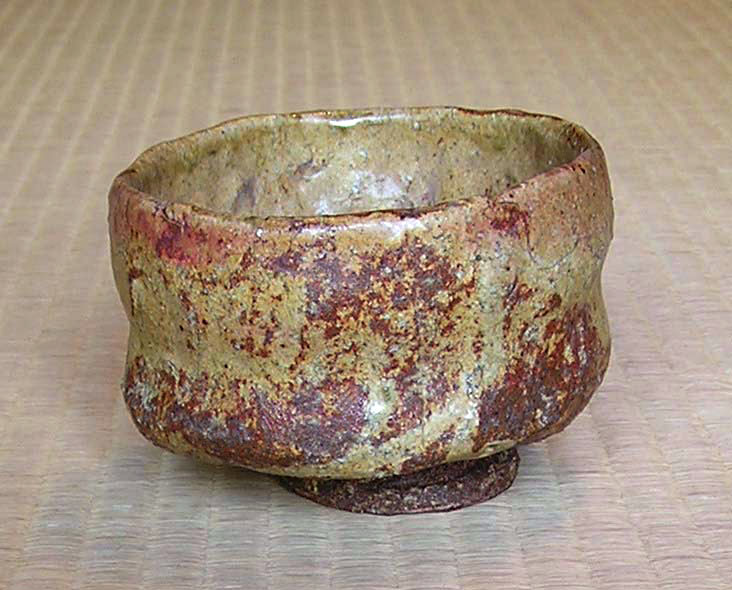|
||
 |
||

(C)2001 Japanese Architecture and Art Net Users System. No reproduction or republication without written permission.
掲載のテキスト・写真・イラストなど、全てのコンテンツの無断複製・転載を禁じます。
|
||||||
| shigarakiyaki 信楽焼 | ||||||
| KEY WORD : art history / crafts | ||||||
| Shigaraki 信楽 ware. Sueki 須恵器 ware was made in this clay-rich area from early times, but a distinctive ware fired in the Shigaraki Nagano 信楽長野 and Kouyama 神山 villages, in Kougagun 甲賀郡 of modern Shiga prefecture, probably originated at the end of the Heian period with the production of utilitarian bowls for seeds tanetsubo 種壷, mortars suribachi 擂鉢, and large storage jars for liquids. Kamakura period works are rare, but Muromachi period vessels are far more common. In the late 15c, tea master Murata Jukou 村田珠光 (1423-1502) favored shigaraki jars, noted for their peach-blossom color, large quartz and white feldspar grains, and deep green to reddish-brown natural ash glazes, the first native Japanese ceramics appropriate for the *wabi わび style of tea ceremony. Common vessel types were the *mizusashi 水指 (fresh water jar), *kensui 建水 (waste water jar) and *hanaire 花入 (flower vases). Objects made before 1573 are called ko-shigaraki 古信楽 (old shigaraki). The natural, spontaneous beauty of shigaraki ceramics were noted in the Momoyama period by the tea masters Sen Rikyuu 千利休 (1522-91), Furuta Oribe 古田織部 (1544-1615), Kobori Enshuu 小堀遠州 (1579-1647), Katagiri Sekishuu 片桐石州 (1605-1673) and Sen Soutan 千宗旦 (1578-1658). In 1632 the Shigaraki kilns were designated as producers of the "official" glazed tea jars in which were packed the famed leaves from nearby Uji 宇治 for presentation to the Tokugawa 徳川 shogun. The introduction of the climbing kiln led to the production of a variety of goods at Shigaraki, including eventually charcoal braziers, hibachi 火鉢, household utensils, ornaments, and gardenware. Shigaraki wares are distinct in their firing effects which produce scorched coloring, a thin coat of natural wood ash glaze, and a body stippled with the contrast between white feldspar grains of Shigaraki clay pulled to the surface by firing and the ishihaze 石爆 (stone-burst) effect in which melted feldspar particles create small holes. | ||||||
 |
||||||
| REFERENCES: | ||||||
| EXTERNAL LINKS: | ||||||
| NOTES: | ||||||
(C)2001 Japanese Architecture and Art Net Users System. No reproduction or republication without written permission. 掲載のテキスト・写真・イラストなど、全てのコンテンツの無断複製・転載を禁じます。 |
||||||